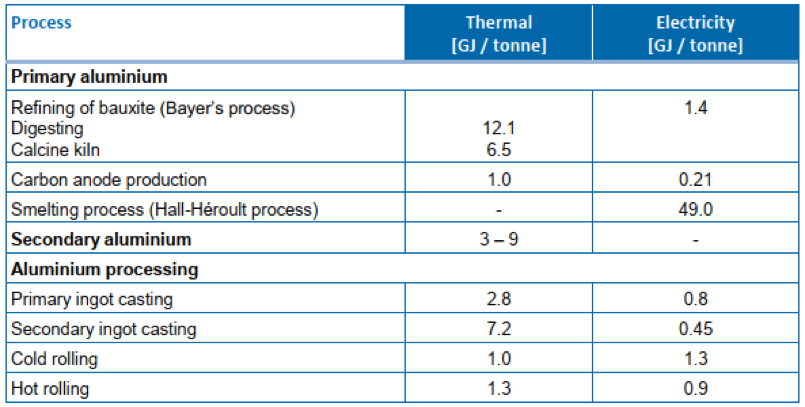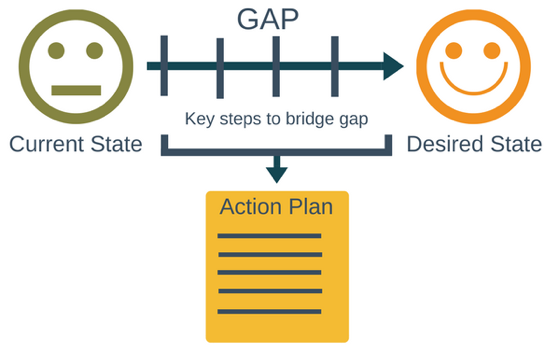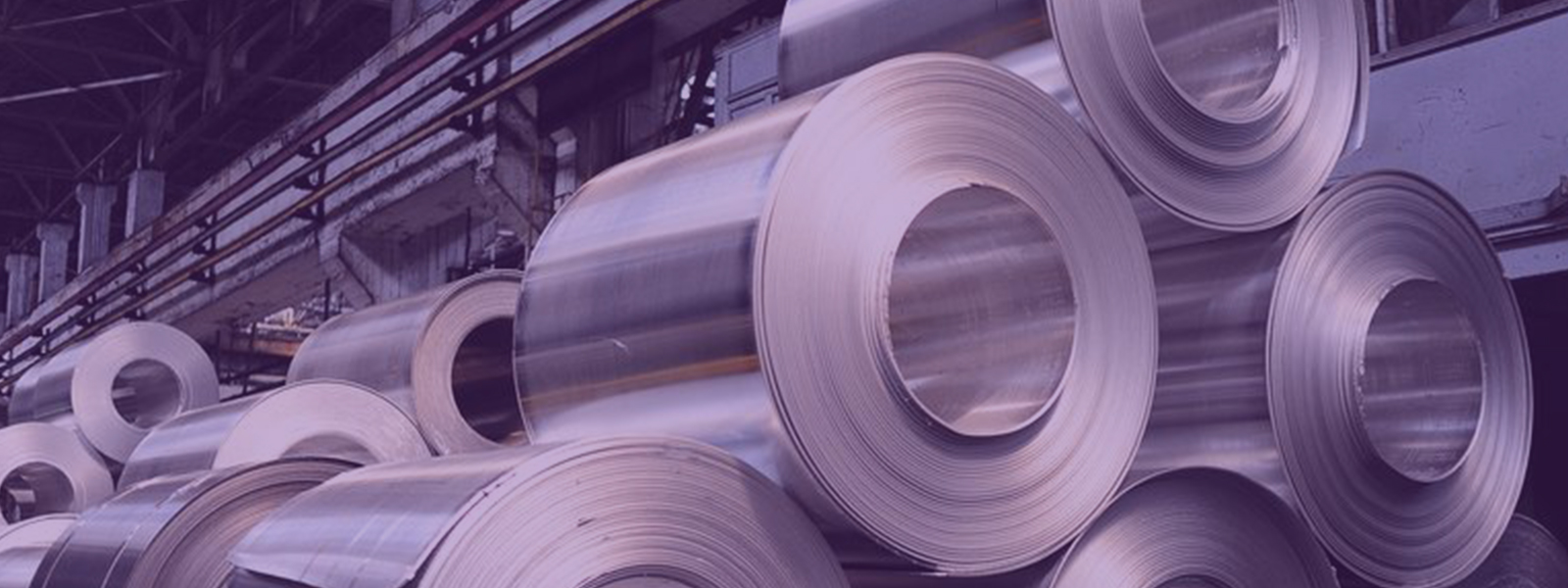Energy Efficiency and Consumption in the Aluminium Sector
Primary aluminium is produced through smelting using an electrochemical reduction system called the Hall-Héroult process. This process uses huge amounts of electricity to extract aluminium from alumina. For this reason, many aluminium production plants are located near to dedicated, low cost, hydropower stations or other cheap power sources.
Due to high energy costs, many primary aluminium plants produce their own power supplies, mostly using gas turbines with waste heat boilers. The energy saving potential in the aluminium sector is very significant, on the order of 10% to 20% depending on the investments made in process and energy improvements.
Click here to view one of our energy efficiency projects for an aluminium production facility.
Energy intensity of the aluminium production processes:

Our Services in the Aluminium Industry
Aluminium smelting is a specialised industrial sector and requires specialised knowledge. At Maximpact, we can provide this expertise to guarantee that your aluminium reduction plant can typically save between 5% to 10% on energy usage per year.
In many aluminium smelters such savings can amount to tens of millions of dollars each year. We can provide a detailed energy audit specification to you that will cover the complete facility and examine all process-related activities.
We also examine the utility systems in the aluminium smelting plants, including any power generation and combined cycle plants located on the site with a view to improving the efficiency of the power plant. Other utility systems we would examine for energy savings include the compressed air systems, cooling water systems, the potential for heat recovery, pumping systems, fume extraction and treatment plants, air conditioning systems and lighting systems throughout the factory both inside and outside.
Below are the energy efficiency services we provide for the aluminium smelter sector. Contact us for more information on these services.
Comprehensive energy audit
We can provide you with a detailed energy audit specification on request.
Data mining and process optimisation opportunities audit
Data mining can uncover a wealth of energy and process-saving opportunities in your industry. The ability to uncover patterns of inefficient energy use or poor process performance and even predict the energy saving potential of utility and process improvements will equip you with a winning competitive edge.
We can provide a first step study that will provide a gap analysis and recommendations as to the measures you need to take now to avail yourself of this new technology. We can work out the type of artificial intelligence systems and approaches that would be best applied to your process and utility systems.
New equipment energy efficiency specification
Are you considering purchasing a new power plant or potline or a new air compressor?
If so, then we can help you ensure that your vendors provide you with efficient equipment that will help you save on its running cost over its entire lifetime. We can help you include energy efficiency specifications in your tender documents to ensure that all bidders bid on a level playing field.
Perform an energy management system gap analysis
We can conduct a gap analysis study of your existing energy management practices to determine what steps are needed so you can transition from your current setup to an efficient energy management system such as that provided by the international energy standard ISO 50001. This global standard specifies requirements for establishing, implementing, maintaining, and improving an energy management standard.

Training in Energy Awareness
Maximpact can provide employee training in energy awareness associated with good plant operational practices.
ISO 50001 Full Implementation Support
We provide support for full implementation of the energy management systems ISO 50001 in your factory.
Plant resilience audit and recommendations action plan
How prepared are your manufacturing processes and utility systems to cope with weather extremes caused by global warming?
Are your manufacturing and utility systems capable of coping with climate extremes such as that seen recently in the United States where a polar vortex over northern parts of the country came with temperatures as low as -50⁰C?
The purpose of our resilience study is to determine how exposed your manufacturing and utility systems are to the extremes in weather variations that will be more commonly experienced due to climate change.
These extremes are occurring right now throughout the world. It was standard practice in the past to design processes for specific minimum low, ambient low, and high ambient temperatures based on weather statistics averaged over 50 to 100 years. Global warming has changed these statistics, but many design engineers have not kept pace with these changes.
We have formulated an approach to assess your process and utility systems and their resilience to climate change. Don’t wait until your process vulnerabilities are revealed by weather extremes, resulting in enormous costs in lost production and product output. Act now and be prepared.
Renewable Energy for Aluminium Sector
- The potential for high-temperature heat recovery from the smelting process to preheat incoming cold streams or to produce electricity
- The use of waste heat and adsorption chillers to make cold water at 3.4⁰C to displace electric chillers used for process or environmental cooling
- On-site wind power generation to displace grid power
- The installation of a gas turbine to produce electricity and waste heat for process use. Such systems can reduce the energy bills (electric and gas/oil) in the aluminium sectors by as much as 45%


